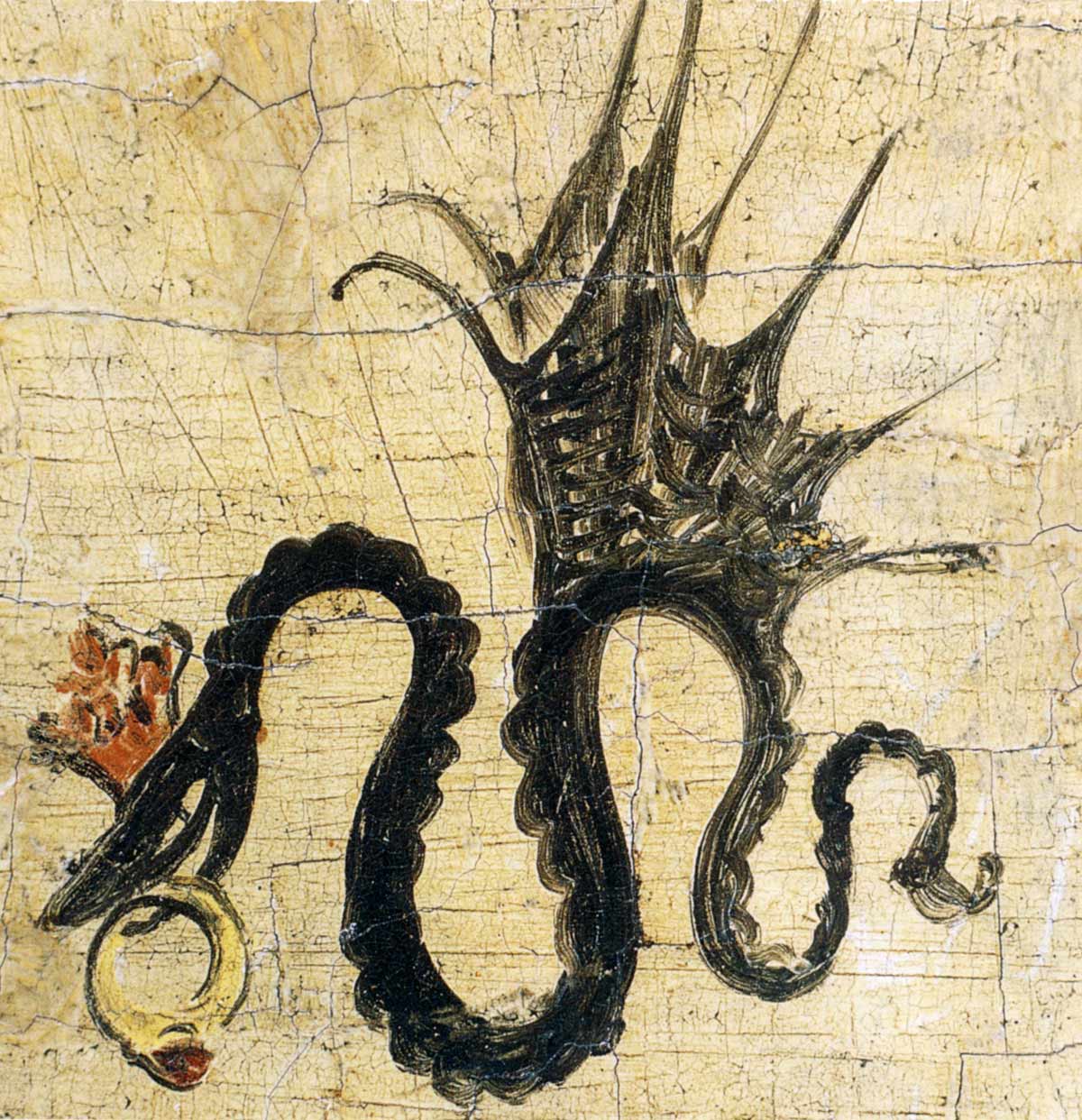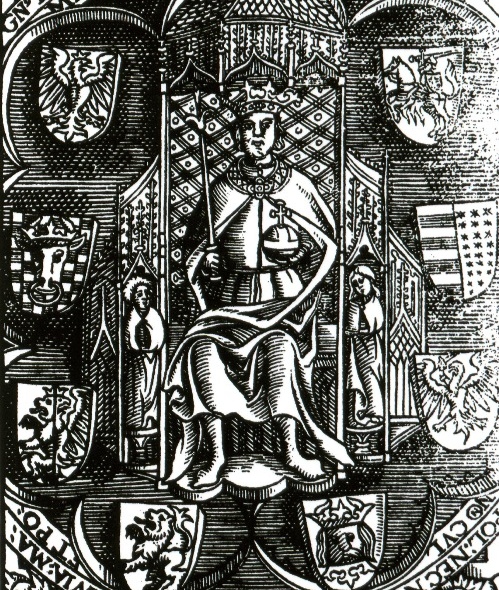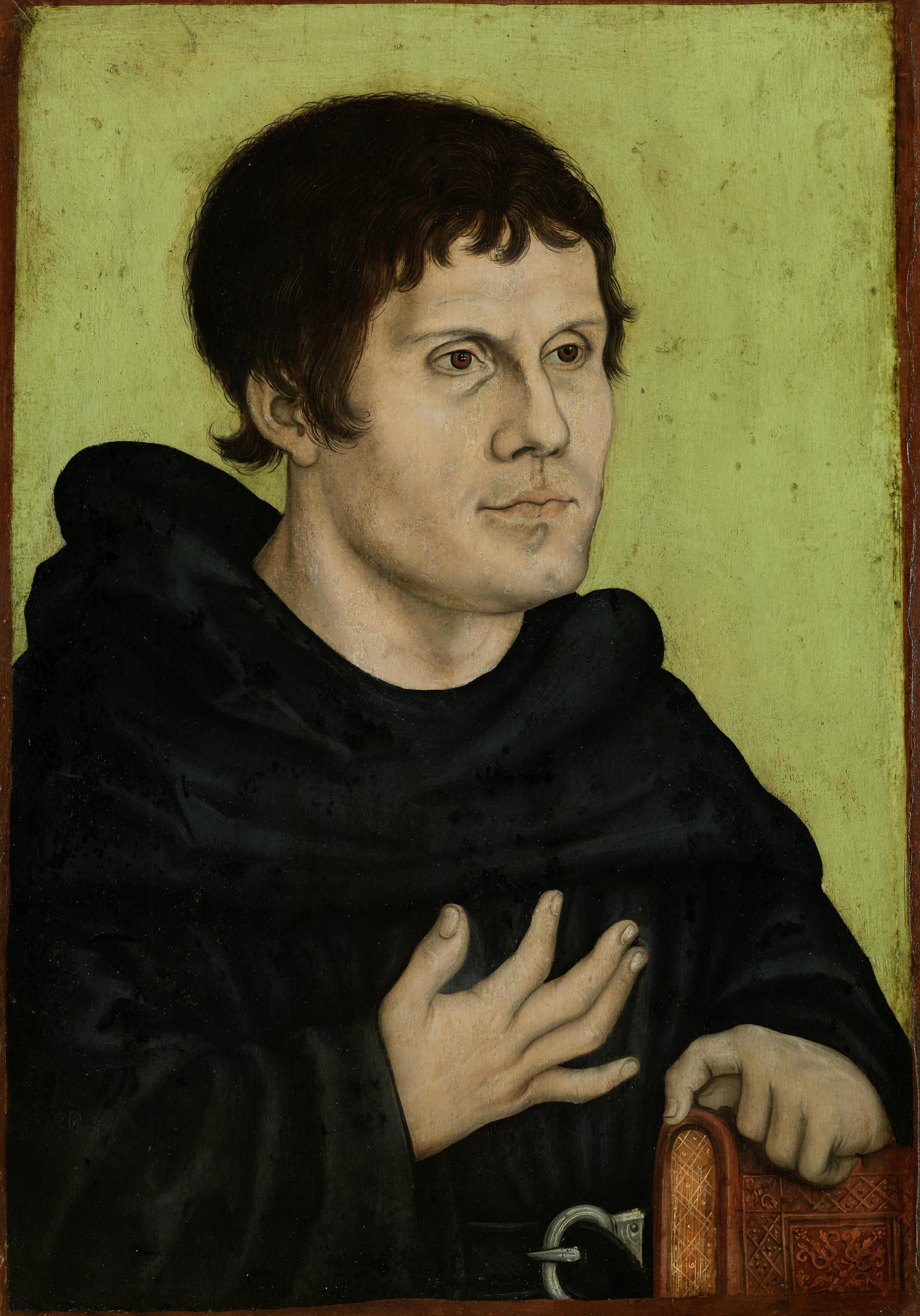|
George, Duke Of Saxony
George the Bearded ( Meissen, 27 August 1471 – Dresden, 17 April 1539) was Duke of Saxony from 1500 to 1539 known for his opposition to the Reformation. While the Ernestine line embraced Lutheranism, the Albertines (headed by George) were reluctant to do so. Despite George's efforts to avoid a succession by a Lutheran upon his death in 1539, he could not prevent it from happening. Under the Act of Settlement of 1499, Lutheran Henry IV became the new duke. Upon his accession, Henry introduced Lutheranism as a state religion in the Albertine lands of Saxony. Duke George was a member of the Order of the Golden Fleece. Life His father was Albert the Brave of Saxony, founder of the Albertine line of the Wettin family, his mother was Sidonie, daughter of George of Poděbrady, King of Bohemia. Elector Frederick the Wise, a member of the Ernestine branch of the same family, known for his protection of Luther, was a cousin of Duke George. George, as the eldest son, recei ... [...More Info...] [...Related Items...] OR: [Wikipedia] [Google] [Baidu] |
Lucas Cranach The Elder
Lucas Cranach the Elder ( ; – 16 October 1553) was a German Renaissance painter and printmaker in woodcut and engraving. He was court painter to the Electors of Saxony for most of his career, and is known for his portraits, both of German princes and those of the leaders of the Protestant Reformation, whose cause he embraced with enthusiasm. He was a close friend of Martin Luther, and Portrait of Martin Luther (Lucas Cranach the Elder), eleven portraits of that reformer by him survive. Cranach also painted religious subjects, first in the Catholic tradition, and later trying to find new ways of conveying Lutheran religious concerns in art. He continued throughout his career to paint nude subjects drawn from mythology and religion. Cranach had a large workshop and many of his works exist in different versions; his son Lucas Cranach the Younger and others continued to create versions of his father's works for decades after his death. He has been considered the most successfu ... [...More Info...] [...Related Items...] OR: [Wikipedia] [Google] [Baidu] |
Lutheran
Lutheranism is a major branch of Protestantism that emerged under the work of Martin Luther, the 16th-century German friar and Protestant Reformers, reformer whose efforts to reform the theology and practices of the Catholic Church launched the Reformation in 1517. The Lutheran Churches adhere to the Bible and the Ecumenical Creeds, with Lutheran doctrine being explicated in the Book of Concord. Lutherans hold themselves to be in continuity with the apostolic church and affirm the writings of the Church Fathers and the first four ecumenical councils. The schism between Roman Catholicism and Lutheranism, which was formalized in the Diet of Worms, Edict of Worms of 1521, centered around two points: the proper source of s:Augsburg Confession#Article XXVIII: Of Ecclesiastical Power., authority in the church, often called the formal principle of the Reformation, and the doctrine of s:Augsburg Confession#Article IV: Of Justification., justification, the material principle of Luther ... [...More Info...] [...Related Items...] OR: [Wikipedia] [Google] [Baidu] |
Casimir IV Of Poland
Casimir IV (Casimir Andrew Jagiellon; ; Lithuanian: ; 30 November 1427 – 7 June 1492) was Grand Duke of Lithuania from 1440 and King of Poland from 1447 until his death in 1492. He was one of the most active Polish-Lithuanian rulers; under him, Poland defeated the Teutonic Knights in the Thirteen Years' War and recovered Pomerania. The Jagiellonian dynasty became one of the leading royal houses in Europe. The great triumph of his reign was bringing Prussia under Polish rule. The rule of Casimir corresponded to the age of "new monarchies" in western Europe. By the 15th century, Poland had narrowed the distance separating it from Western Europe and became a significant power in international relations. The demand for raw materials and semi-finished goods stimulated trade, producing a positive balance, and contributed to the growth of crafts and mining in the entire country. He was a recipient of the English Order of the Garter (KG), the highest order of chivalry and the mos ... [...More Info...] [...Related Items...] OR: [Wikipedia] [Google] [Baidu] |
Wolf Caspar Von Klengel
Wolf Caspar Klengel, from 1664 von Klengel (8 June 1630 – 10 January 1691), was a German architect in Saxony. Biography Wolf Caspar von Klengel was born in 1630 in Dresden as the son of the electoral councillor and chief tax accountant Caspar Klengel and his wife Sabina Elisabeth, née Fischer. Klengel's maternal grandparents were the captain of the Saxon Life Guards, Wolfgang Fischer, and the granddaughter of the famous court architect Paul Buchner, who worked in Saxony. Wolf Caspar von Klengel had a thorough education at secondary school or even grammar school level. As part of his privately organised education, he learned good Latin and Greek as well as modern subjects such as mathematics and drawing. Klengel set off on his first journey abroad at a young age, on 2 June 1647. It took him via Hamburg to Amsterdam, Leyden and The Hague. Via Brussels, he arrived in Paris on 16 May 1648, where he attended the Duc de Beaufort's military academy for the summer. In addition to trai ... [...More Info...] [...Related Items...] OR: [Wikipedia] [Google] [Baidu] |
Meissen Cathedral
Meissen Cathedral or the Church of St John and St Donatus () is a Gothic church in Meissen in Saxony. It is situated on the castle hill of Meissen, adjacent to the Albrechtsburg castle and forms a critical centrepiece of the iconic Meissen skyline overlooking the River Elbe in the valley below. History It was the episcopal see of the Bishopric of Meissen established by Emperor Otto I in 968. It replaced an older Romanesque church. The present-day hall church was built between 1260 and 1410, the interior features Gothic sculptures of founder Emperor Otto and his wife Adelaide of Italy as well as paintings from the studio of Lucas Cranach the Elder. The first Saxon elector from the House of Wettin, Margrave Frederick I, had the Prince's Chapel erected in 1425 as the burial place of his dynasty. The twin steeples were not attached until 1909. In 1581 the Meissen diocese was dissolved in the course of the Protestant Reformation, and the church was used by the Protestant Chur ... [...More Info...] [...Related Items...] OR: [Wikipedia] [Google] [Baidu] |
Leipzig
Leipzig (, ; ; Upper Saxon: ; ) is the most populous city in the States of Germany, German state of Saxony. The city has a population of 628,718 inhabitants as of 2023. It is the List of cities in Germany by population, eighth-largest city in Germany and is part of the Central German Metropolitan Region. The name of the city is usually interpreted as a Slavic term meaning ''place of linden trees'', in line with many other Slavic placenames in the region. Leipzig is located about southwest of Berlin, in the southernmost part of the North German Plain (the Leipzig Bay), at the confluence of the White Elster and its tributaries Pleiße and Parthe. The Leipzig Riverside Forest, Europe's largest intra-city riparian forest, has developed along these rivers. Leipzig is at the centre of Neuseenland (''new lake district''). This district has Bodies of water in Leipzig, several artificial lakes created from former lignite Open-pit_mining, open-pit mines. Leipzig has been a trade city s ... [...More Info...] [...Related Items...] OR: [Wikipedia] [Google] [Baidu] |
Margraviate Of Meissen
The Margravate or Margraviate of Meissen () was a medieval principality in the area of the modern German state of Saxony. It originally was a frontier march of the Holy Roman Empire, created out of the vast ''Marca Geronis'' ( Saxon Eastern March) in 965. Under the rule of the Wettin dynasty, the margravate finally merged with the former Duchy of Saxe-Wittenberg into the Saxon Electorate by 1423. Predecessors In the mid 9th century, the area of the later margravate was part of an eastern frontier zone of the Carolingian Empire called Sorbian March (''Limes Sorabicus''), after Sorbian tribes of Polabian Slavs settling beyond the Saale river. In 849, a margrave named Thachulf was documented in the ''Annales Fuldenses''. His title is rendered as ''dux Sorabici limitis'', "duke of the Sorbian frontier", but he and his East Frankish successors were commonly known as ''duces Thuringorum'', "dukes of the Thuringians", as they set about establishing their power over the older Duc ... [...More Info...] [...Related Items...] OR: [Wikipedia] [Google] [Baidu] |
East Frisia
East Frisia () or East Friesland (; ; ; ) is a historic region in the northwest of Lower Saxony, Germany. It is primarily located on the western half of the East Frisia (peninsula), East Frisian peninsula, to the east of West Frisia and to the west of Friesland (district), Landkreis Friesland. Administratively, East Frisia consists of the districts Aurich (district), Aurich, Leer (district), Leer and Wittmund (district), Wittmund and the city of Emden. It has a population of approximately 469,000 people and an area of . There is a chain of islands off the coast, called the East Frisian Islands (). From west to east, these islands are Borkum, Juist, Norderney, Baltrum, Langeoog and Spiekeroog. History The geographical region of East Frisia was inhabited in Paleolithic times by reindeer hunters of the Hamburg culture. Later there were Mesolithic and Neolithic settlements of various cultures. The period after prehistory can only be reconstructed from archaeological evidence. A ... [...More Info...] [...Related Items...] OR: [Wikipedia] [Google] [Baidu] |
Martin Luther
Martin Luther ( ; ; 10 November 1483 – 18 February 1546) was a German priest, Theology, theologian, author, hymnwriter, professor, and former Order of Saint Augustine, Augustinian friar. Luther was the seminal figure of the Reformation, Protestant Reformation, and his theological beliefs form the basis of Lutheranism. He is widely regarded as one of the most influential figures in Western world, Western and History of Christianity, Christian history. Born in Eisleben, Luther was ordained to the Priesthood in the Catholic Church, priesthood in 1507. He came to reject several teachings and practices of the contemporary Catholic Church, Roman Catholic Church, in particular the view on indulgences and papal authority. Luther initiated an international debate on these in works like his ''Ninety-five Theses'', which he authored in 1517. In 1520, Pope Leo X demanded that Luther renounce all of his writings, and when Luther refused to do so, Excommunication in the Catholic Church, ... [...More Info...] [...Related Items...] OR: [Wikipedia] [Google] [Baidu] |
Frederick III, Elector Of Saxony
Frederick III (17 January 1463 – 5 May 1525), also known as Frederick the Wise (German: ''Friedrich der Weise''), was Prince-elector of Electorate of Saxony, Saxony from 1486 to 1525, who is mostly remembered for the protection given to his subject Martin Luther, the seminal figure of the Reformation, Protestant Reformation. Frederick was the son of Ernest, Elector of Saxony and his wife Elisabeth of Bavaria, Electress of Saxony, Elisabeth, daughter of Albert III, Duke of Bavaria. He was one of the most powerful early defenders of Martin Luther, as the elector successfully protected him from the Holy Roman Emperor, the Pope and others. He was ostensibly led, not by religious conviction about the possible truth of Luther's propositions, but rather by personal belief in a fair trial for any of his subjects (a privilege guaranteed by the Holy Roman Empire, imperial statutory law) and the rule of law. The prince-elector is considered to have remained a Roman Catholic all his life, ... [...More Info...] [...Related Items...] OR: [Wikipedia] [Google] [Baidu] |
King Of Bohemia
The Duchy of Bohemia was established in 870 and raised to the Kingdom of Bohemia in Golden Bull of Sicily, 1198. Several Bohemian monarchs ruled as non-hereditary kings and first gained the title in 1085. From 1004 to 1806, Bohemia was part of the Holy Roman Empire, and its ruler was an Prince-elector, elector. From 1526 to 1804, the Kingdom of Bohemia, together with the other lands of the Bohemian Crown, was ruled under a personal union as part of the Habsburg monarchy. From 1804 to 1918, Bohemia was part of the Austrian Empire, which itself was part of the dual monarchy of Austria-Hungary from Austro-Hungarian Compromise of 1867, 1867 to 1918. Following the Dissolution of Austria-Hungary, dissolution of the monarchy, the Bohemian lands, now also referred to as Czech lands, became part of Czechoslovakia, and they have formed today's Czech Republic since the 1993 dissolution of Czechoslovakia. Legendary rulers of Bohemia * Lech, Czech, and Rus', Praotec Čech (Pater Boemus) * Lech ... [...More Info...] [...Related Items...] OR: [Wikipedia] [Google] [Baidu] |
George Of Poděbrady
George of Kunštát and Poděbrady (23 April 1420 – 22 March 1471), also known as Poděbrad or Podiebrad (; ), was the sixteenth King of Bohemia, who ruled in 1458–1471. He was a leader of the Hussites, but moderate and tolerant toward the Catholic faith. His rule was marked by great efforts to preserve peace and tolerance between the Hussites and Catholics in the religiously divided Crown of Bohemia – hence his contemporary nicknames: "King of two peoples" () and "Friend of peace" (''přítel míru''). During the 19th century, in period of the so-called Czech National Revival, he began to be praised (even somewhat idealized) as the last Czech national monarch (in terms of ethnic awareness), a great diplomat and a courageous fighter against the domination of the Catholic Church. In modern times he is remembered mainly for his idea and attempt to establish common European Christian institutions, which is now seen as an early historical vision of European unity. Early li ... [...More Info...] [...Related Items...] OR: [Wikipedia] [Google] [Baidu] |








